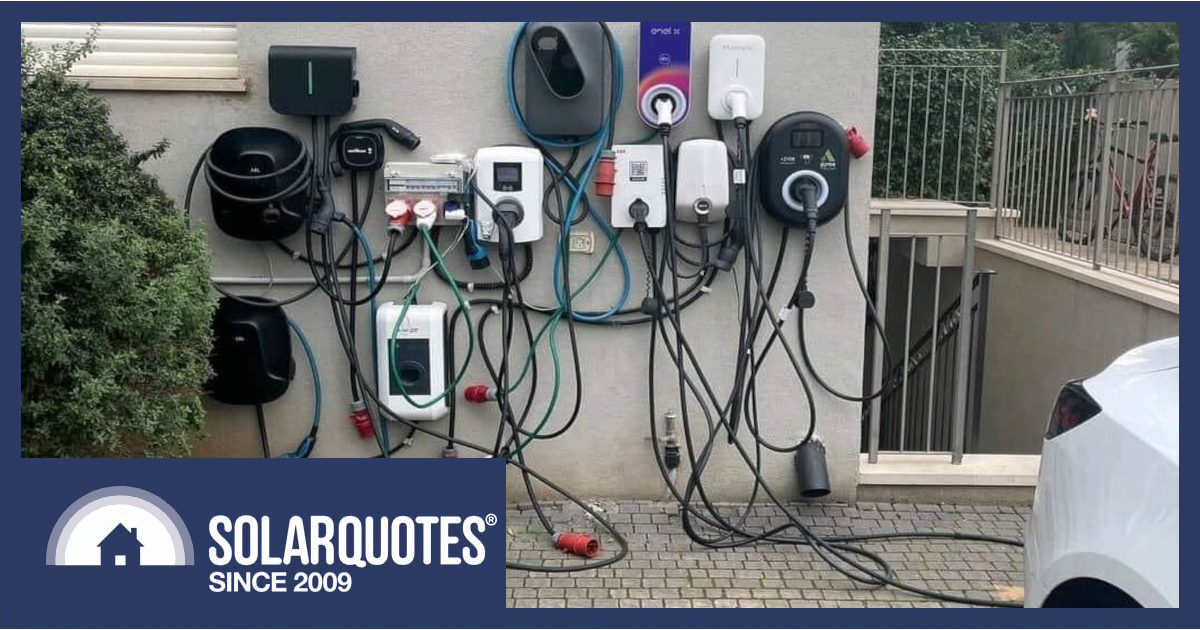
It’s early days for most Australian electricians when it comes to deciding which EV chargers they will offer going forward.
Several strong contenders emerge based on discussions with fellow electricians, but surprisingly, despite its reasonable price and quality construction, Tesla’s wall charger isn’t at the forefront. Lacking smart features, the Tesla charger misses the opportunity to be an obvious choice in the market.
Let’s Get Bi-Directional Charging Out Of The Way
Any post about home EV charging always attracts tons of questions about bi-directional charging. So let’s address that first.
Currently, the only available option is a CHAdeMO-equipped vehicle paired with a Wallbox Quasar. However, connection approval is limited to South Australian residents.
Interestingly it appears that Tesla has now decided to enable bi-directional charging around 2025, but they’ve made noises about it before now. We’ll have to see it to believe it.
And the development of CCS standards to enable bi-directional charging – CCS2 – still hasn’t been finalised. When I spoke to a rep from Tritium at the most recent All Energy conference, he said that
“CCS2 is two years away”,
So while a bi-directional solution is available on the market now, the Wallbox Quasar is rumoured to be getting replaced with the Wallbox Quasar 2 in Q4 2023, which should be ~40% cheaper.
What Do Electricians Look For In An EV Charger?
When comparing EV chargers, installers primarily look for one thing: quality. And that comes in the form of the Fronius Wattpilot.
It’s smart, connects with WiFi, offers great functionality, and we have a good write-up of these excellent devices, so I would encourage you to read that for the nitty gritty because there are some vagaries to get across in terms of capacity.
Zappi EV Charger
Everyone, except Finn, reckons the next best thing is a Zappi.
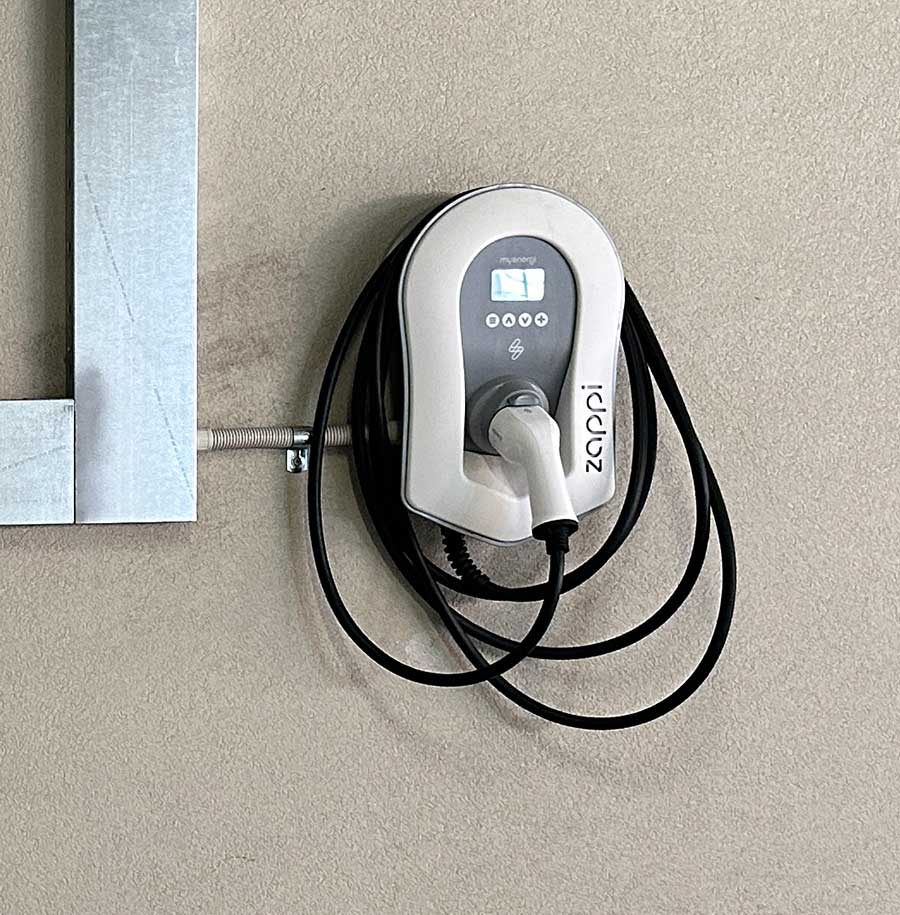
Zappi 2 EV Charger manufactured myenergi.
The Zappis have been on the market for some time and must have proven themselves as well-regarded amongst solar installers. There are certainly some good features on offer, so perhaps the best advice I can offer is – to install them in the shade. And don’t share any experiences of Zappis failing – unless you enjoy receiving threatening legal letters?1.
Tesla Wall Connector
Tesla isn’t a third-rate option but has come third in my conversations.
Neither the Tesla nor the Zappi talk OCPP, which means you can’t upgrade their functionality using an external API control such as ChargeHQ.
Zekicharge EV Chargers
Zekicharge products offer some interesting models which are being rolled out to replace Tesla chargers in many places. Why change a working charger? Well, to paraphrase the people involved,
“Tesla owners are the worst”
And by that, he meant that they would pull up at a cafe and hog the free charging bay for hours. By installing a pay-as-you-go charger which also bills for parking (once you’ve finished charging and not moved on), everyone gets a fair go at their favourite cafe.
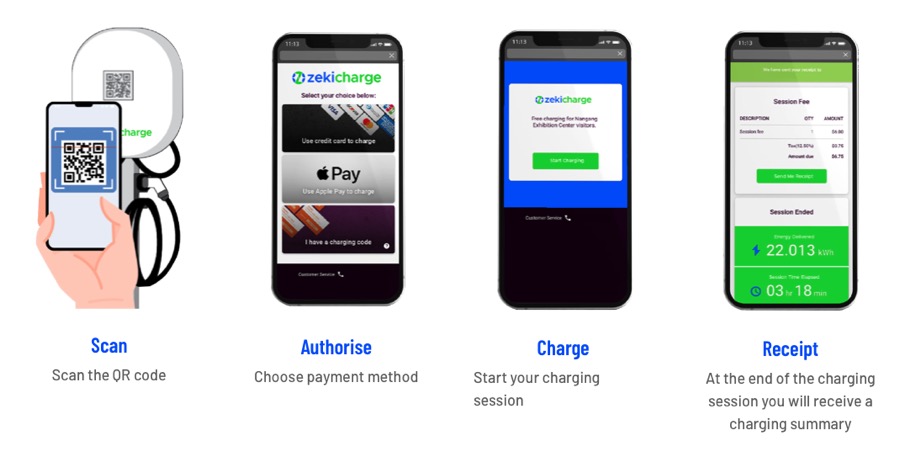
Zekicharge units can charge for kWh used. But after the car’s stopped charging, they can also charge for parking (or ‘idling’ time)- encouraging drivers not to hog the charger.
Wallbox
Wall Box Pulsar also rates a mention if for no other reason than it’s a really compact unit. There’s a selector switch for you to vary the demand if required. I have installed one myself, and spacing it off the wall meant it even became a good place to coil the tethered charger lead. However, the app, which is what you need to make settings, is rubbish.
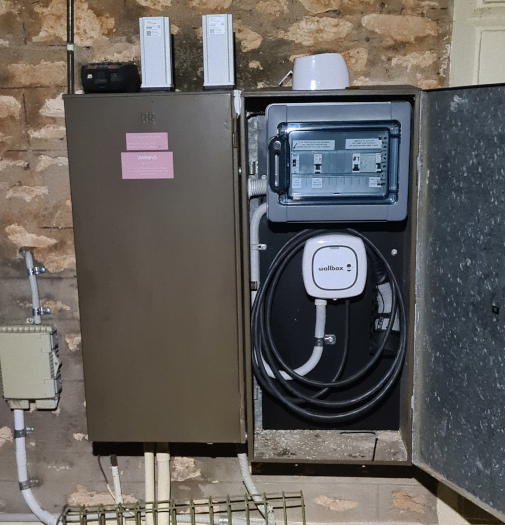
Wallbox is a tiny device really.
Off-Grid EV Charging
For the off-grid customers, you would think that Victron would be all over car charging with their new smart box, however, I understand that it seems to be a beta product, and there are bugs to be ironed out.
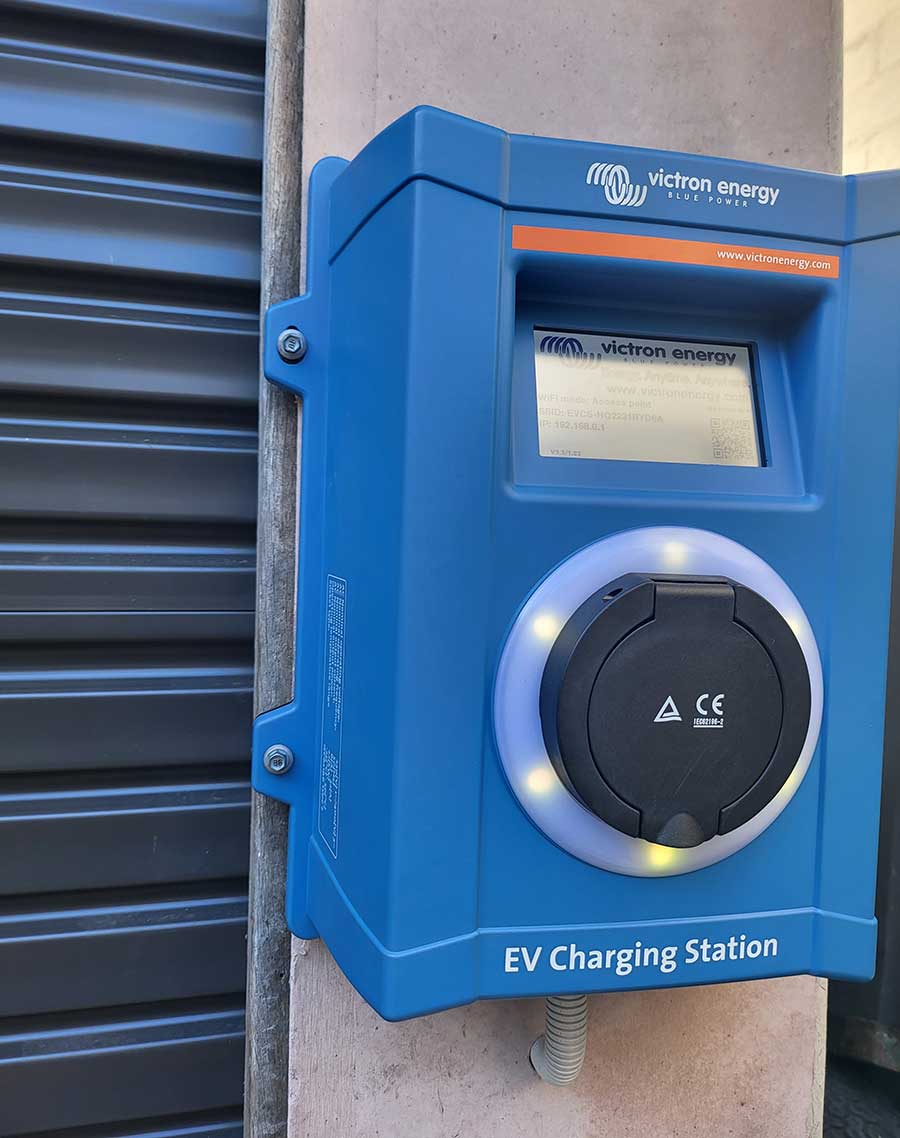
Victron’s bi-directional EV charger. As with most Victron products, it should work well off-grid.
However, the Schneider EVB1A22P4RI smart wall box has 24vDC digital inputs for on/off and ramp power output, which makes it suitable for off-grid systems where integrating charging is more critical than anywhere else.
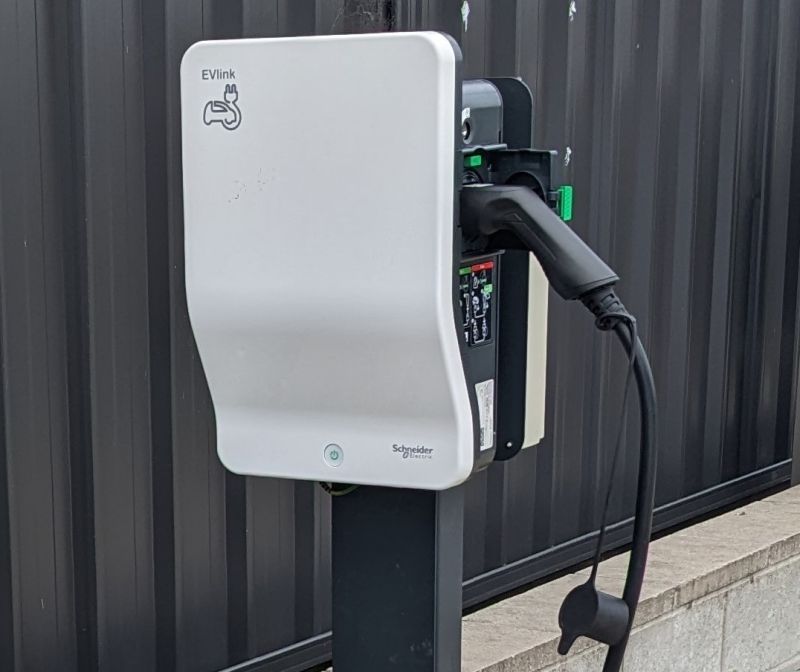
Schneider EVB1A22P4RI Charger – can control other appliances to manage demand in an off-grid system.
It’s something that Selectronic have a solution for, provided you have a compatible charger.
OCPP – Open Charge Point Protocol
Whatever charger you choose, the best advice I can offer is to get one with OCPP 1.6 connection protocol. What this means is that your charger can talk to external services, be it your own smart services that can divert solar yield into charging the car or just as importantly, the DNSP/grid operator which may need to turn your charger down when the grid is under peak load. This is already being done with DRM (demand response management) capability for air conditioners and solar inverters. Some schemes are voluntary, others compulsory and some are even incentivised with payments and will also be used by virtual power plants.
The Grid Has Capacity – If We Smart Charge
This graph shows how the South Australian grid is changing.
Here on the left, we have the handful of hours on the handful of days where the grid approaches overload, while on the right, we see increasingly that there are more and more times when there is virtually no load because all of South Australia’s energy is coming from rooftop solar. The vertical axis shows the total demand in megawatts, while the horizontal axis shows how much energy is being generated behind the meter by rooftop solar.
At the far right, when the curve crosses the dark, horizontal line at zero we need to be charging cars because there’s abundant energy that will otherwise just be curtailed. Think of it as rainfall. We could be putting it in tanks instead of watching it go down the stormwater drain.
Where OCPP and other demand response technologies come in is making sure that SAPN can keep a lid on things at the very extremes of this graph. Flexible solar exports mean generation can be curtailed on mild spring days, while car charging and air conditioning can be toned down on very hot afternoons.
Smart Charging Is Not For Everyone
Car charging needs a lot of energy over a lot of hours, and if you don’t have a very large solar PV system and some nice sunny days, then a simple charger and a timer is a simple solution that ensures you only charge from off-peak grid electricity, or when the sun is most likely to shine, or both.
Off-Peak Connections and Daft Rules
Local electricity providers, known as DNSPs, encourage the use of off-peak tariffs for electric vehicle chargers. These off-peak rates are expected to transition to daytime “solar sponge” rates in the near future. As a customer, it’s important to know that when the new daytime “super” off-peak rates are introduced, your car might not charge overnight if it is set to charge exclusively on the lowest-priced tariff.
Many off-peak plans provide a restricted power supply, allowing for a maximum load of 7kW/32A to be connected. Current DNSP regulations also state that only one off-peak load is permitted at any given time. This means you cannot charge your electric vehicle and heat water simultaneously, even if your charger is designed to manage the loads. As renewable energy sources increasingly contribute to the grid, such rules will have to go.
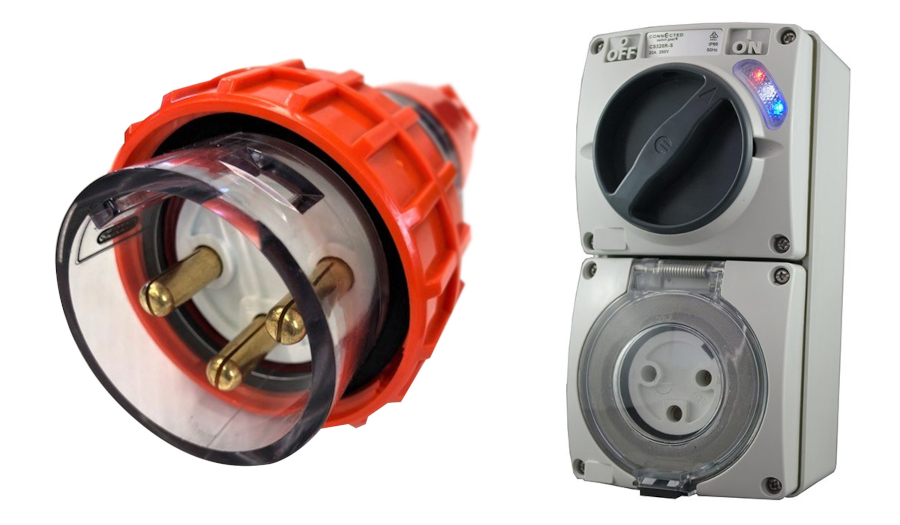
Round screwed connector, not dissimilar to a 3-phase socket outlet and plug.
If you have a single-phase supply in the sunshine state, then the recalcitrant Queensland DNSPs have (yet another) silly requirement. They will not allow a 7kW/32A charger on an ordinary single-phase service unless the charger is connected to an off-peak tariff.
You can only have a 4.6kW/20A car charger on your regular supply. While this means you could charge your car with some of your own solar yield, it’s still an artificial limit that defeats the purpose of electrification in the first place.
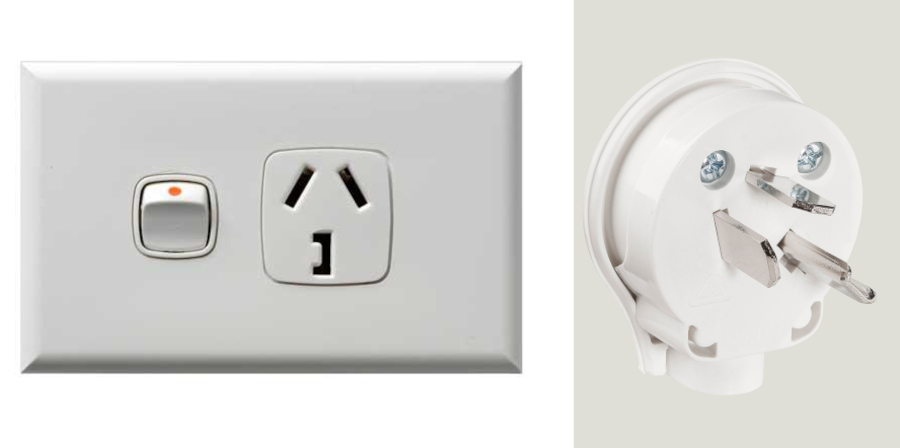
Yes, you can get a 32a wall plate which accepts a standard plug too.
If you have a 3-phase supply, then these restrictions don’t apply, but upgrading the supply to a house can be an exceptionally expensive exercise if you have to dig across the road, for instance.
So what some electricians are doing to push back is simply installing a 32A general purpose outlet… and then whatever the customer chooses to plug into that outlet is up to them. It’s an approach that makes some sense because it means you can take your charger away if it needs repairs or take it to your Mum’s house when you visit. Whether it is breaking the rules… You’ll have to ask your local electrician.
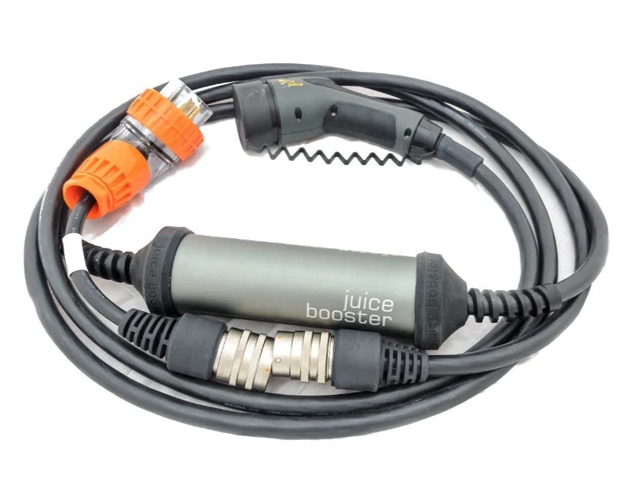
Portable chargers such as the Juice Booster can plug into a 3-phase socket and charge at up to 22 kW. Expensive, though, at over $3k.
EV owners skirting the connection rules could easily be avoided if the networks would realise that the technology exists to automatically and dynamically balance demand from the grid and supplement supply with available sunshine. I hope the electricity networks will see the light soon.
Footnotes
- Can you tell who edited this post yet? ↩

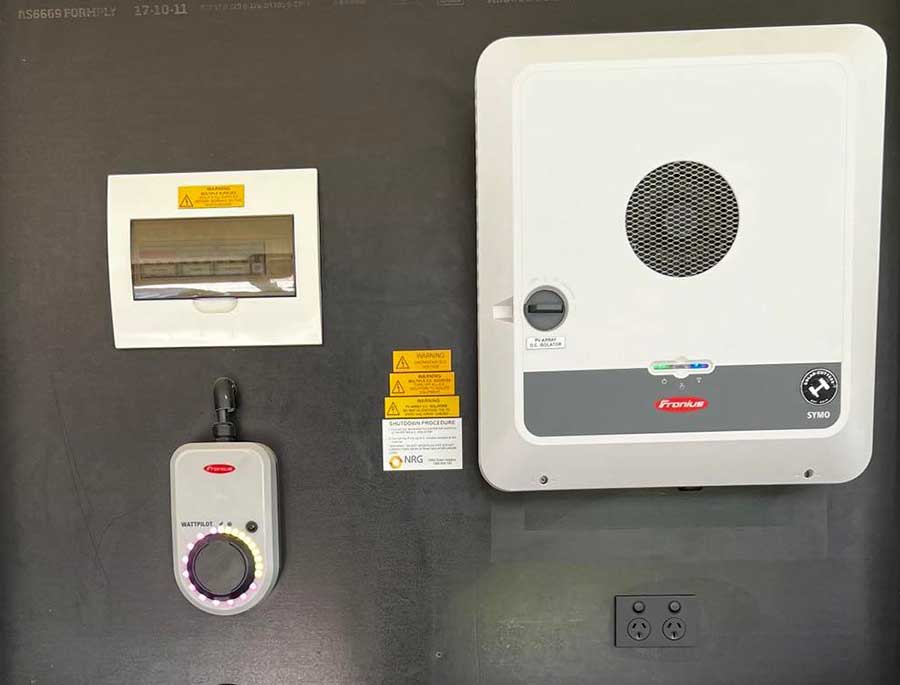
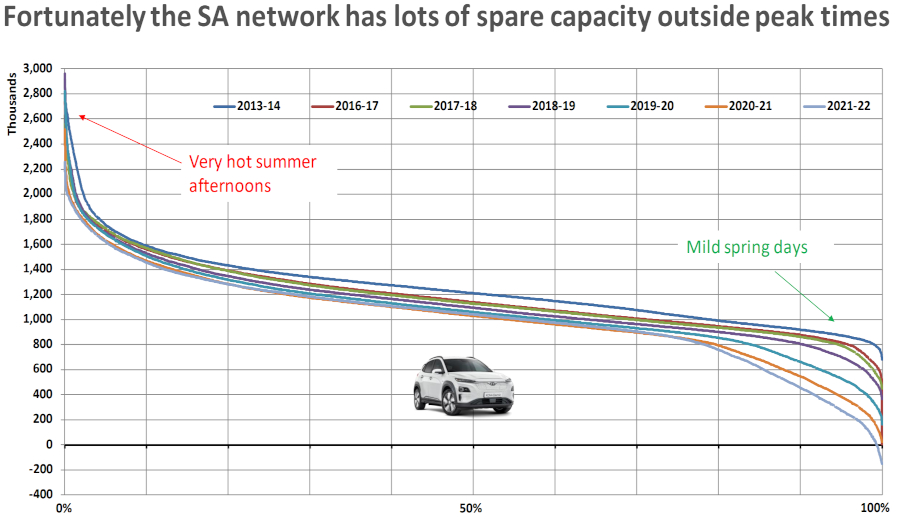
 RSS - Posts
RSS - Posts



Any take on these?
https://enphase.com/store/ev-chargers/residential-ev-chargers
First, I’ve seen them. They look very reasonably priced. No OCPP compatibility is a showstopper IMO. I’m rapidly falling out of love with Enphase – as they make it so damn hard for 3rd parties to talk to their hardware.
A few weeks ago I spotted a new range of Enphase chargers using microinverters and bidirectional .. not showing in link above but can be found here https://enphase.com/download/bidirectional-ev-charger-white-paper
Am fairly sure, in qld at least, that one can not have a T31 off peak tariff supply point that can be powered from a solar inverter.
Please correct me if wrong.
You imply, if not state straight out, that an option is to have an off peak tariff supplied point that is also powered from solar when available.
Hi I’m surprised Tesla Off Grid charging wasn’t mentioned as described here:
https://www.youtube.com/watch?v=wTJcr0jRlrI
If you go with the Powerwall and a Tesla EV this looks like a super elegant off grid system that supports EV charging?
With Powerwall 3 going to LFP chemistry and its ability to handle more cycles it seems it will be even better.
I have lived offgrid for 25 years with AGM batteries. I intend buying a Model Y & upgrading to a Powerwall as soon as (if ??) Tesla offers vehicle to load so I can use this off grid charging system and use the car to boost the Powerwall during long periods of low solar.
Would be interested in any comments on this approach?
Just curious, and maybe a dumb idea. Given many are not at home to charge an EV in peak solar times (they’re at work), might they ever consider a scheme where your metered export at home could be used to offset charging costs elsewhere, say at a charger near your workplace?
Hi Nick,
It isn’t a silly idea but would need a rethink from the retail industry & possibly regulators. Right now they supply to one address and 10 digit National Metering Identifier.
It’s already possible to identify a customer EV just by plugging into a charger, so billing shouldn’t be a huge issue.
What I think may happen is you have a portable energy subscription so to speak, which will include a network charge, and that will get really interesting as we roll out bi-directional charging. There’s a chance you’ll be paid to soak up solar at midday then get paid again (or just save money) to siphon energy off from the car during the evening peak.
Good thinking Nick.
A PV Feed-in Credit [in kWH] for a customer to “redirect to other customers” rather than a cash based FIT, goes back a while in different places; notably Brazil.
It was promoted by the Brazilian Government for Commercial Systems only to utilise factory rooftops everywhere, and I was involved in the initial prototype commercial 200 kW system design for a Brazilian industrial company Nipponflex in 2018.
It makes a lot of sense, and here was the initial concept brief to start from, I received from Nipponflex in March 2018:
“At the moment we intend only to produce energy using a solar project based around our Maringa’s Office and Factory. The Electric power Concessionaire of our region allows the project to work as follows. We can use all our building’s roofs from the factory to produce even more electric power than we need to run it. The excess generates a credit in our electric bill. This credit we can use to lower the value of others electric bills from companies, or even residential buildings that are owned throughout Brazil by Nipponflex.”
Nicks concept works well in Brazil and should be considered locally.
Lawrence Coomber
Thanks Lawrence! Fascinating to hear the idea being used in practice, at a commercial level too.
Hi,
good & timely article. Personally, I have a ZJBeny OCPP charger connected to a personal Home Assistant Server, that plugs into a 32A round pin outlet.
OCPP has the old basic standard of 1.6, but now chargers are available with 2.0 & later. Not sure what offerings are on the market yet for 2.0 or later.
Home assistanf also now has users working on linking to Amber power (in Australia Eastern states) for access to Wholesale power prices. With an OCPP charger, Home Assistant (which runs on a little computer like a rPi)
& time availability, it is possible to be paid for charging your EV by using negative cost power. Not for the faint hearted, but very possible. I am looking into it….
As far as off-grid goes, it should be possible to interface an OCPP charger with Home Assistant to manage the charging. (Search on the HA site).
Personally, I think fixed chargers that are not OCPP compliant should be banned from future sales. We need control of charging as a Virtual Power Plant for times of grid stress. (so 10A chargers are OK to be dumb, but high output chargers need to be externally controllable I feel)
Hi Doug,
I agree that the DNSPs will rue the day they allowed car charging they can’t at least see. The Queensland was having economy tariff connections have taken a blunt instrument approach but OCPP is obviously much better.
And thanks for the heads up on Home Assistant.
The future of charging and home storage should be high voltage dc. Your solar cells produce dc and the strings produce high voltage. Storing that in high voltage batteries has the least drop in efficiency.
Car batteries are dc and increasingly moving to higher voltage for wiring and storage reasons.
Because the grid is ac high voltage chargers are 3 phase ac, but converting from dc to ac and back to dc makes no sense in the long run.
We need to look at the big picture ocassionally and not be dictated by short term expediency based on current infrastructure.
Hi Trevor,
To some extent we are doing just that with grid hybrid inverters which are now allowed to have more than 133% solar PV connected. Some actually allow 200% or more so that they can have for instance, 5kW output to AC loads as well as 5kW direct DC battery charging.
However getting DC car charging to work at home would mean doubling up on infrastructure because you would have a charger for daytime and another for night. Seeing as inverters are normally north of 90% efficient we’ll probably just have to suck that up.
I wonder who would have won “the war of the currents” between Edison and Westinghouse if 125 years ago they had the solid state power handling gear we have now.
Trevor Anthony missed your point entirely.
What you say about Higher Voltage DC Storage and Solar PV Circuits is absolutely correct.
I have been designing building and installing DC Coupled Off Grid Solar PV integrated with Battery Storage [nominal battery voltage 480 VDC] Systems for 14 years.
There are totally unjustifiable historical reasons why we have not moved quickly into efficient higher voltage [> 480 VDC] battery storage systems, but you can research that for yourself, I have published widely for years on this subject. Search Google: “Lawrence Coomber” + “higher voltage”
I have also worked with the Society of Automobile Engineers in Detroit in 2017, on designing training courses for Safe Handling of Higher Voltage EV Battery Stacks for engineers involved in battery stack assembly and disassembly.
HV PV + Battery Storage Designs – Key Points:
1. Higher Voltage means Lower Current means smaller gauge copper wires means greater efficiency and more cost effective design.
2. Less current means smaller circuit protection devices means less heat means less risk of fire.
The benefits list is a long one….
I will leave it at that for now.
Lawrence Coomber
Thanks Lawrence,
I don’t think anyone has missed the point that higher voltage is more efficient. Trevor was I think lamenting conversion efficiencies. I don’t think any amount of aggrandisement addresses the fact that conversions from DC to AC and back to DC again are a little ludicrous. However having two disparate charging circuits connected into the same vehicle, with weather dictating switching between them, really is unjustifiable when the increases in efficiency are a handful of percent, from a free resource.
Interestingly, the Tesla Cybertruck is said to have just one 12v circuit, for the cigarette lighter socket. The rest of the car is either high voltage from the traction pack or 48v for the balance of the automotive circuits.
Seeing as these voltages will both be over the 35v threshold for DVC1 from the IEC standards, I just want to know when we have to start tagging and testing Teslas?
Anthony you did miss my point. My last sentence was there to emphasise my point.
“We need to look at the big picture ocassionally and not be dictated by short term expediency based on current infrastructure.”
I will be installing a Sungrow battery with my next solar install. If I could have a charger based on that battery, which would be similar in voltage to the dc battery in a car, that I don’t intend to buy at present, it would be dc HV charging.
My point is until we look at the big picture we are all going to be taking one step at a time when we could make big strides bt looking further ahead.
Anthony, it is difficult to disagree. The loudly touted efficiency increase has diminishing returns, while the risk of death (to which you most delicately allude) rises rapidly once above ELV. It seems doubtful that the last efficiency dregs are worth the deaths due to lethally leaping electrons at voltages incompatible with life, not least the domestic kind, including children.
Both cars and pioneer domestic solar were 12 VDC, so inefficient at high power, but the cost of panels made that irrelevant. The transition to 48 VDC domestically brought a 16-fold increase in efficiency. I.e. 93.75% of the losses at 12v have been eliminated already. Yes, going lethally industrial with 480 VDC would take us from ~94% to 99%, but there is no fuel cost to pay – just the cost of the deaths. There is also the cost of regular electrical inspections of 480 VDC installations in amateur hands. This goldmine could enthuse commercial interests, admittedly.
The 230 VAC already present domestically is less dangerous than 480 VDC, not only due to being half the voltage, but the zero crossings make arc extinguishing so very much easier. If we had 48 VDC appliances, that networking relic could also be eliminated. (I’m already looking at converting my milling machine, for better speed control without slow and clumsy belt changes.)
That doesn’t mean that I’m against enthusiasts using 800 VDC car batteries in a custom PV system. But I wouldn’t consider my electrical engineer training sufficient for safe handling. (The last low impedance 600 VDC source I had my hands on, we called “The death Machine”)
Nope, I’m quite prepared to put an extra two panels on the roof to make up the 5.25% lost in 48v vs 480v, and save the extra thousands for a HV switchgear enclosure, the thousands for regular inspections, and (with global population peaking precipitately) a few lives here and there as well.
It’s kinda handy if a solution doesn’t create more problems than it solves.
Consider nuclear reactors.
Any data points on the SolarEdge 2-in-1 inverter? I’m upgrading solar and adding an EV at the same time.
I believe – but could be wrong – that it’s being phased out in favour of their ‘regular’ dedicated EV chargers.
One attractive feature of the Tesla Gen3 wall charger, as documented in Gen3_WallConnector_Installation_Manual_AU_NZ, is that it can be connected to a “two phase with neutral” (split phase) supply, allowing 14.7 kW charging from a 32 amp circuit. This can be particularly useful for home charging in rural locations where such supply is common, and where access to public charging is limited.
However, Tesla’s nominated charger installer (JET Charge) refused to install a Gen3 charger in this configuration, and Tesla have failed to respond to my requests regarding compatibility of such an installation with locally sold Tesla vehicles.
Does anybody know whether Gen3 chargers can be used on Tesla vehicles in this configuration?
Hi Ian,
It’s an interesting point you make about split phase. That compatibility would stem from the Americans use of split supplies to many premises. (We call them 110v peasants)
I’ll reach out and see if they have an answer for us here in the civilised world.
Might have already said this, but I thought one wasn’t able to connect an off peak point to solar, not in Qld anyway. Seems you are suggesting g connect charge point to off peak AND solar.
Also, this seems a fast moving landscape.
Have been in market for a solar upgrade for 12 months, about to pull trigger and thought had settled on its hardware; 2x 5kw Sungrow inverters, 1 hybrid, with 13 kw PVs +9.6kwh sungrow battery.
With Qld upping EV rebate am wondering if should revisit this for something more atuned to ev charging. Thoughts, anyone?
Hi Neil,
I would investigate more solar PV on the roof. With a battery you needn’t stop at 13.3kW.
https://www.solarquotes.com.au/blog/beat-solar-oversize-rule/
As for off peak, solar can’t be connected to that element in a meter (but stranger mistakes have been made I assure you)
Banana benders have been frustrated though because car charging connected to economy tariffs mean they might export units for 5c/kWh and then buy them straight back for triple the price via the off peak register in your meter.
Plugging or switching between tariffs may be an answer, however many DNSPs have a little known legacy rule that means technically you should notify them of any fixed appliances over 2.4kW and you need permission to switch anything over 4.6kW (20amps)
Skirting around this is the fact that car chargers are defined not as an appliance but as a socket outlet in AS3000, hence they don’t require an isolator (like an air conditioner for instance)
Thank you for the interesting ‘graph showing how the SA grid is changing’.
Can you please respond to my following questions / comments :
y axis = Demand in 10^9 Watts x axis =Percentage of Demand supplied by roof top solar.
The graphs show the percent of Demand supplied by rooftop solor as a function of temperature.
What are the temperature limits for ‘Very hot summer afternoons’ and ‘Mild spring days’ ?
How are these temperatures related to the solar panel ‘nominal operating cell temperature’. ?
Total demand appears to have reduced from approx. 2600 GW in 2013-14 to2300 GW in 2021-22 ?
For 2021-23 at the ‘Mild spring day’ temperature limit, rooftop solar supplies all of the Demand and exports approx.. 180 GW.
Hi Murray,
To be honest I don’t have hard numbers on temperature, you would have to ask SAPN for that. This graph comes from their recent presentations about EV charging being a real game changer.
What we already know is that peak demand in SA has been shifted by rooftop solar, last I heard it was a full hour later, and will end up being right before sunset as we face more solar west.
Temperature plays a massive part, in terms of the heat affecting solar output, panels are rated at 25°C ambient with an assumed cell temperature under the glass at 45°C. Radiant heat from the sun obviously raises this temperature, as to does electrical resistance, so panels have a temperature coefficient in their specifications. They lose around -0.4% output, per degree C over the rated 25°C ambient. Cold days with bright overcast conditions are actually best. Search for “cloud edge effect” for more on that.
Of course the ambient temperature also has it’s impact on demand of course. Refigerative air conditioning of poorly designed and built houses is a bane of the energy industry, so much that SAPN have been running demand response programs (where they remotely shut down A/C compressors) in houses throughout Mawson Lakes for 10(?) years or more. We all pay for this because the network and generation required to run these behemoths is very expensive. Mind you the coming EV demand will make better use of this heavy duty infrastructure.
Have a look at these sites :
https://opennem.org.au/energy/sa1/?range=3d&interval=30m
https://aemo.com.au/energy-systems/electricity/national-electricity-market-nem/data-nem/data-dashboard-nem
https://reneweconomy.com.au/nem-watch/
Hi all, just recently had a 11.62kW Enphase system installed, and have a Model Y arriving in around a month’s time (hopefully). We really prefer to charge using our solar system/excess solar energy – would the Zappi be the smartest way to do this? I had a look and it seems ChargeHQ isn’t compatible with Enphase so it looks like i’m locked out everything on that side. Would really appreciate some guidance – thanks.
Yes – Zappi will work with Enphase. Get the 3-phase Zappi if you have a 3-phase supply.
Hi I’m surprised the fact that Tesla can manage off grid EV charging does not seem to have been mentioned on Solar Quotes? ie
https://www.youtube.com/watch?v=wTJcr0jRlrI
I have been off grid with AGM batteries for 25 years and intend to upgrade to a PowerWall and purchase a Model Y to manage off grid charging.
I am waiting a little longer for the PowerWall 3 which is LFP which I understand will handle more cycles. I am also hoping that Tesla will also offer V2L so I can use the Model Y to boost the PowerWall in times of low Solar.
Would be interested in comments on this approach.
Hi Wal,
A word of caution. Tesla have backed away from true off grid systems, they will no longer warrant them. It seems that the grid forming capacity from Tesla isn’t quite as good as they thought it was(?) While they’re a great grid hybrid system, they won’t black start in the morning if you run the battery flat overnight.
If you have no mains connection you need a proper grid forming inverter such as a Selectronic SpPro, especially if you’re planning to get an EV because you’ll need a great deal more energy (ie a lot more solar) delivered at a consistently high rate.
Thanks Anthony – that’s a disappointment that Tesla won’t warranty off grid. I do intend to upgrade my large open north facing roof to 20KW when I get the powerwall(s) and Model Y. Given that I have managed my AGM batteries for 25 years to never go below 70% SOC to preserve their life – I am thinking that I should avoid getting anywhere near running the battery flat? Given my track record in looking after the existing lead acid system, would you still think an all Tesla solution (with all of its apparent lovely integration and simplicity) is a bit risky?
Wal I think it might hinge on what the system ends up looking like a s a whole. I’ve you’ve got 25 years out of AGMs then you’re doing well, however if the rest of the system has remained unchanged then it’s likely you need an overhaul of more than just batteries, because the technology marches on and we often find that AGM lead systems don’t cope well with lithium.
Thanks again – no I am assuming a major system overhaul. My aim is to have 20kw PV, Powerwall 3’s and Model Y integrated using Tesla software using a fully Tesla system. But from what you are saying that may not be possible now ?
PS my original AGM died 3 years ago and I bought a cheap interim AGM to use till the above was became possible.
Hi Anthony,
Brilliant, deeply researched article, giving much meat for making choices.
While I might be able to wait for the Victron charger to shake off its beta status and initial bugs, the Schneider has caught my interest. Modulating charge rate with a 24v DC signal could readily be derived from a battery shunt monitor, to avoid off-grid domestic battery discharge. Unfortunately, in an on-line manual, I’ve only been able to find :
“Temporary current limitation from 16 A (3.7 and 11 kW) to 10 A, or from 32 A (7.4 and 22 kW) to 16 A, to cut the risk of electric overload.
Permanently adjust the maximum charging current available for the vehicle, to avoid tripping (utility meter or incoming circuit-breaker) when the overall consumption of the home is close to the subscribed power.”
And the datasheet I’ve found only claims:
“Input type: Binary for power limitation closing contact
Binary for delayed charging closing contact”
I’ll look into its OCPP capability, as it has both RS485 and ethernet connectivity. If that provides more proportional control, all is not lost.
Or, perhaps, I’m just missing something. There’s a lot of space out there for the right information to be hiding.
With Elon declaring intent to spend US$25B over the next few years to hit 20 million EVs p.a. by 2030, instead of just 10 million, the EV charger market will be substantial. I can’t help wondering if it was CATL who tempted him to drop Tesla prices, as their below-capacity battery production rate needed optimising. But are we prompt enough to avoid frying? (45.4 degC in India in spring is yet another record. What do we have in store here, I wonder?)
Hi Erik,
Thanks for getting into that Schneider documentation, I don’t have enough hours to read all of them cover to cover but I was given the impression that they offer proportional charging, not just stepped control. There certainly are some Schneider products that share a grid connection across several chargers in a commercial setting.
We can only hope that the climate system can cope with what we’ve already baked into in, otherwise we’re all going to roast.